Attiya Khan, survivor-filmmaker-counsellor-healer
“I was determined to lift the silence surrounding domestic violence, so I made a goal to talk about it openly and often.”
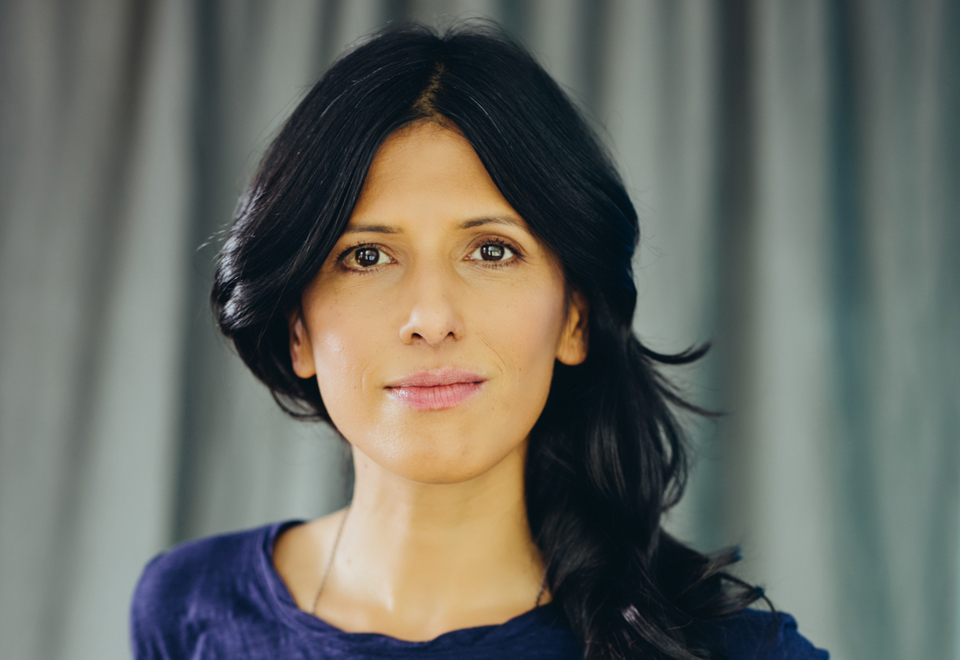
Photo: Jennifer Rowsom
When we experience violence—especially if it’s inflicted by someone we love or trust—it affects how we see ourselves and our world. It can extend to all aspects of our lives, discolouring what we think we deserve, how we treat others and how we let ourselves be treated.
That applies to survivors of violence. It also applies to those who perpetrate it.
Violence has a far-reaching, long-lasting impact for all who are touched by it. Yet we rarely talk about it.
In her remarkable documentary, A Better Man, Attiya Khan bravely breaks that silence. Her film explores the abusive two-year relationship she endured with a man named Steve more than 20 years ago, when they were both teenagers. But the doc’s most striking feature is that it doesn’t just give voice to the survivor; it provides a platform for her abuser, too.
A Better Man begins with a conversation between Attiya and Steve at a coffee shop in Toronto, Ontario. She asks him about the abuse, what he remembers and how he wishes the relationship could have gone differently. It goes on to follow the pair as they revisit places where the abuse occurred—at their old apartments in Ottawa, Ontario—and the high school they attended.
The film also invites the viewer to listen in on further, therapist-led discussions, in which Steve acknowledges that he experienced injustices before he met Attiya.
It’s a unique and essential approach to documenting intimate partner violence. Bringing the abuser into the conversation provides a much-needed space in which to explore how and why it happens, and to discover a way forward.
A Better Man took shape when Attiya, who moved to Toronto for university, found herself once again in the same city as Steve. At first, she was terrified. But Steve was always appropriate: he never followed her home, as she feared, and didn’t ask for her contact information.
Eventually, their interactions became civil. Attiya even began to trust him, and when she could see past her fear and anger, she was able to see him as a person, not just her abuser.
She also saw that he seemed unhappy, and began to wonder if the violence he had subjected her to had wounded him as well.
As her curiosity grew, Attiya decided to take action. She asked Steve if he would talk to her about their abusive relationship in a documentary she planned to make. He said, “Yes.”
“Steve mentioned to me when I first asked him to be in the film that if his participation could help one man, then it would be worth it,” says Attiya.
Filming began in 2013, and the project was bolstered by a successful Indiegogo campaign that included a $10,000 donation from singer Leslie Feist. The filmmaking team evolved to include Sarah Polley as executive producer and the National Film Board of Canada as co-producer.
In making A Better Man, Attiya took a huge step in overcoming fear—fear for herself, that her depression, anxiety and insomnia would resurface, and for Steve, over how viewers would react to him. The risk was well worthwhile; creating the film offered a gateway to true healing for both of them, and a valuable tool for many, many others.
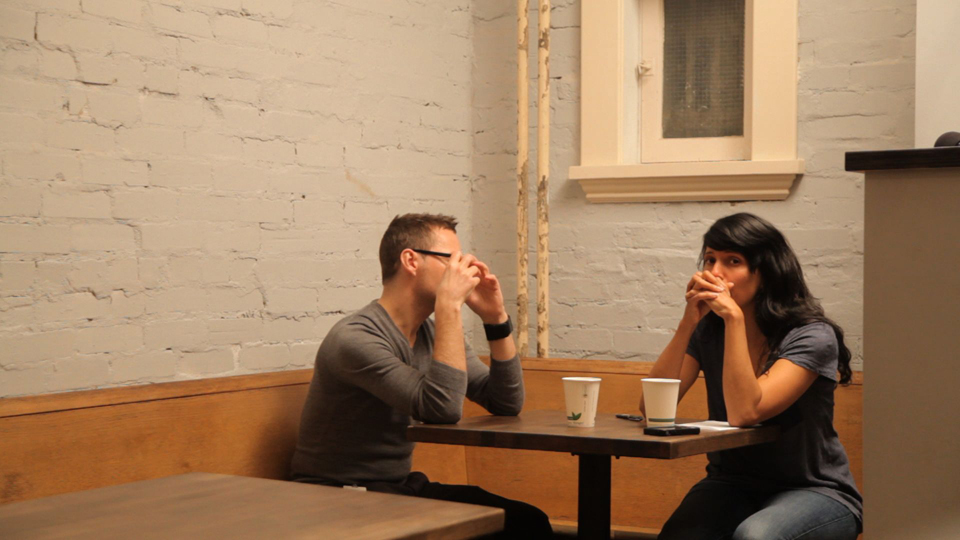
Steve and Attiya in “A Better Man”
In the beginning
Attiya first met Steve at a cancelled Depeche Mode concert in Ottawa. She was 16, he was 17. It was, in her words, a very happy time.
“It was an amazing day,” she says. “We ended up hanging out for the whole day. I stayed over at his friend’s house with him and we talked all night. I fell in love with him very quickly… On that first day, he complimented me a lot and was very sweet. He was my first serious partner.”
Attiya, who was born in Pointe-Claire, Quebec and spent her formative years in Montreal, Quebec before moving to Ottawa, comes from a full house. She has 10 siblings, six of whom her parents adopted. (Her mother hails from Sheffield, England, and her father from Lucknow, India.)
When Attiya met Steve, he lived a few hours away from Ottawa. After courting by telephone, he wound up moving into her basement so they could see more of each other.
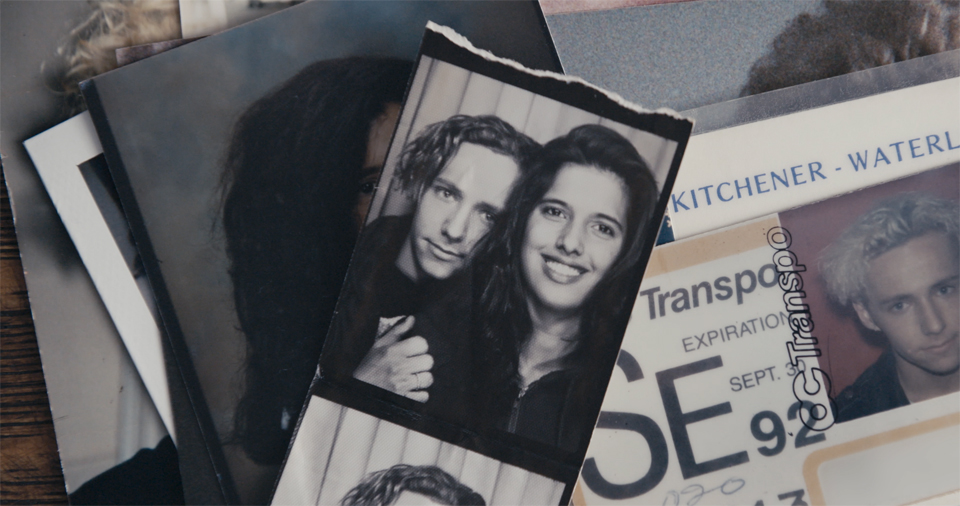
Steve and Attiya as teenagers
Attiya’s family home is where Steve first used violence against her.
“I remember being very scared and very confused,” she says. “He was a mess after he hurt me and said it would never happen again. I believed him.”
The abuse went undetected by her family.
After a couple months of living in that crowded house, Attiya and Steve got their own apartment. From there, the abuse quickly escalated.
“I was very isolated from my friends and family,” she says. “Early on in our relationship, I remember thinking I deserved the abuse. I had no self-esteem and believed that Steve was the only person who could love me.”
In A Better Man, Attiya describes in detail the abuse she suffered. At its worst, Steve would strangle her until she passed out. But Attiya stayed for two years of daily abuse, both physical and verbal.
“I felt like I had nowhere else to go,” she says. “At the time, I did not feel like I could go back to my family home. I did not know that shelters existed. I’m actually not sure if Ottawa had a shelter at that time for youth experiencing intimate partner violence.”
Attiya was finally able to walk away from Steve (actually, she ran) after making new friends who not only noticed her bruises but stepped up to intervene.
“They wanted to support and help me,” she says. “They had to convince me that I did not deserve the violence I was experiencing. I remember them telling me positive things about myself. About how I was smart, interesting, stylish and kind. I found this all hard to believe at first. They helped to find me a safe place to live. They saved my life. I came to the realization that I did deserve to be safe and loved by someone who would not harm me.”

In love we trust
After leaving Steve, Attiya was out of physical harm’s way. But inside, she was left with many scars; she was depressed, anxious and deeply mistrustful of others.
“I think that had to do with the fact that many people saw and/or knew what was happening and did not intervene,” she says.
That included authority figures. In A Better Man, Attiya recounts a conversation with a teacher who admitted to having noticed the bruises, despite never having asked about them while Attiya was her student.
Fortunately for Attiya, her next relationship was a positive, healing experience.
One of the friends who helped her leave Steve was a young man named Seth, who appears in A Better Man. Attiya struggled at first to believe that Seth truly liked her, and was uncomfortable with his kindness. But, she says, “Seth is a very gentle person and I came to a point where I trusted him. My self-esteem and confidence grew. I was finally able to be myself.”
In future relationships, Attiya kept her guard up, but it stood her in good stead. “I learned a lot from my relationship with Steve,” she says. “I learned what I didn’t want in relationships. There were a few people I dated who I broke up with immediately because I could see early warning signs of abuse.”
By the time she met her now-husband, Alex, in the early 2000s, she was able to be completely open with him about her past with Steve.
“I actually told him about it on our first date,” says Attiya. “I really liked Alex as soon as I met him, so I felt the need to tell him about my experience of violence… It was kind of an intense first date!”
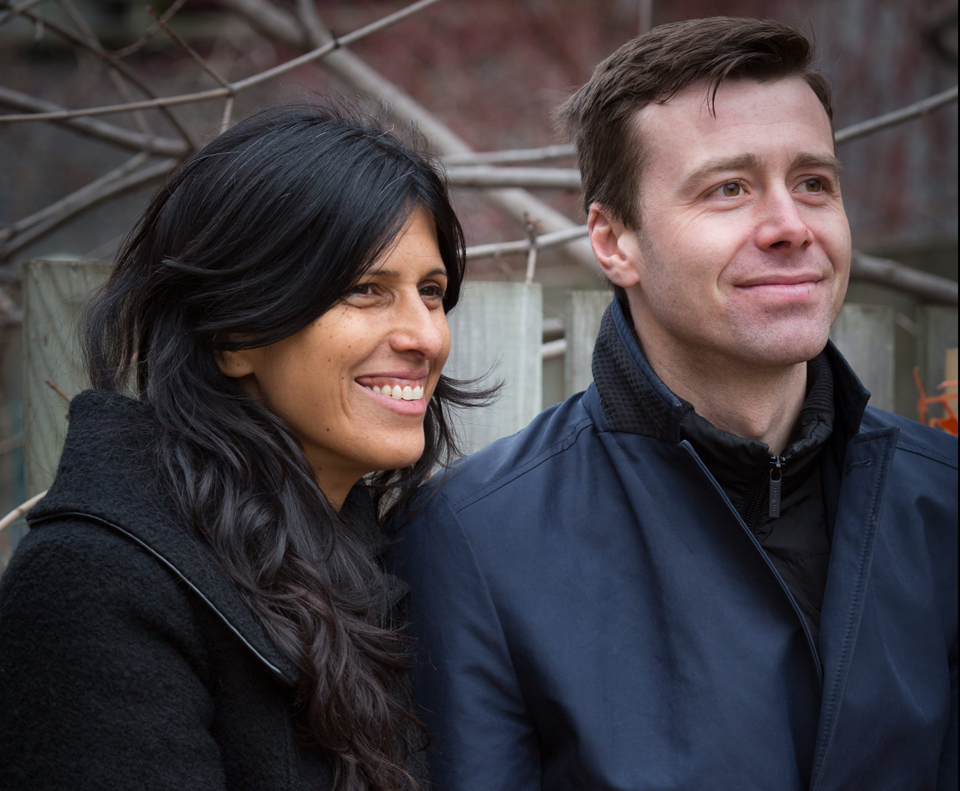
With her husband, Alex
Alex also appears in A Better Man, along with his and Attiya’s 10-year-old son, Elliot. Together, the couple is doing everything they can to educate Elliot, whom Attiya calls “a lovely person,” about the importance of treating others with respect.
“When Elliot was born and the nurse whispered, ‘It’s a boy,’ I had a moment of panic, closed my eyes and thought, ‘Please don’t abuse anyone,’” says Attiya. “This immediate response I had makes me sad. But it doesn’t surprise me that it was one of my first thoughts.”
It’s also not surprising that she rallied from that thought, took the time to see things clearly, and went on to set a strong example for her son to follow. She and Alex talk regularly to Elliot about what it means to be a good friend, be inclusive and speak up against bullying.
“Elliot’s whole life outside of school revolves around sports,” says Attiya. “We have had many conversations about how girls and women in sports are not taken as seriously [as boys and men], not recognized, and many times excluded. As a family, we participate actively in events to raise awareness about violence against women.
“Elliot is aware that I was in a relationship where I experienced violence and he knows about the film. I’ve talked to him about how Steve has taken responsibility for the violence he inflicted on me, and the importance of apologizing and being accountable when we hurt someone. I believe it’s very important to talk honestly with kids about the challenges people face.”
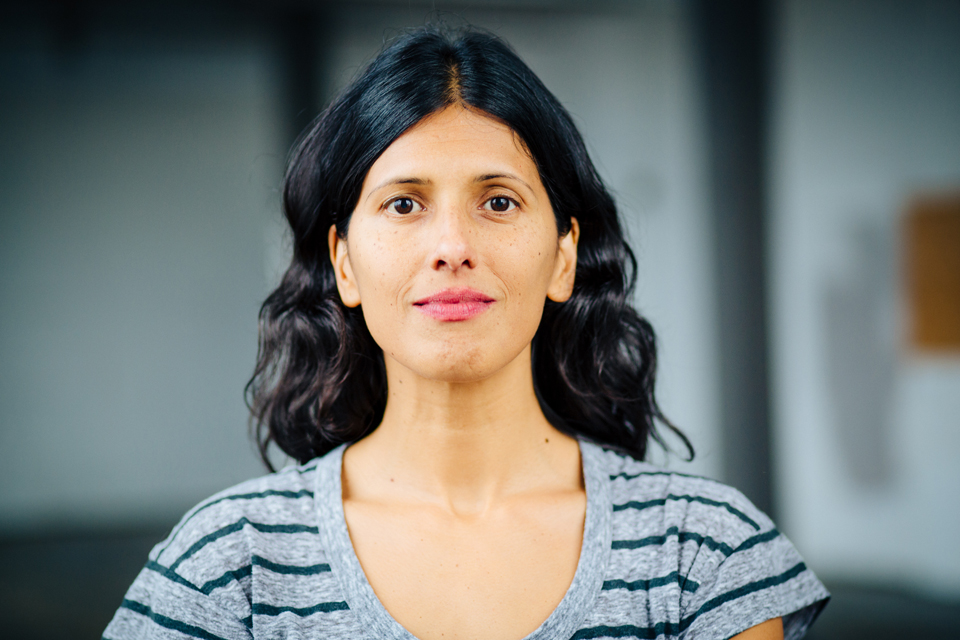
Good counsel
Attiya’s desire to connect with others and help them recover from hardships began long before Elliot was born. As soon as she left Steve, she felt compelled to work with women who had experienced intimate partner violence.
“I wanted to do something with my experience, use it to help others,” she says. “I was able to completely let go of the shame and embarrassment that often accompanies experiencing domestic violence. I was determined to lift the silence surrounding domestic violence, so I made a goal to talk about it openly and often.”
After finishing high school in Kitchener, Ontario, Attiya enrolled at the University of Toronto, where she majored in women’s studies and minored in psychology. Once she graduated, she took the Assaulted Women’s and Children’s Counsellor/Advocate program at George Brown College.
From there, Attiya spent more than 15 years working with women and children who have experienced domestic violence. Her career includes three years running the child and youth services program at a shelter for domestic violence survivors in Cambridge, Massachusetts and overseeing YWCA Toronto’s December 6 Fund, which allocates interest-free loans to women needing to leave domestic violence situations.
Now, Attiya is focused full-time on deploying A Better Man to help as many people as possible. Since releasing the film at Hot Docs this past April, she and her team have been flooded with requests to bring A Better Man to their communities.

With fellow counsellor Sollange Umwali; Photo: Marina Dempster
“My intention with the film from the beginning was for it to be used as a tool in schools, workplaces, social services organizations, intervention programs and living rooms,” says Attiya.
She and her team, along with their partner organizations, are developing resources to accompany the film. There’s the free discussion guide designed to help viewers digest the film. And a high school learning module is in the works, in collaboration with the Ontario Secondary School Teachers’ Federation and the National Film Board; the plan is to pilot the module in the 2017–2018 school year.
“One of my goals with this film is to highlight programs that help people who use violence, work towards living a life of non-violence,” says Attiya. “In the film, you meet Tod Augusta-Scott, who is the executive director of Bridges Institute in Truro, Nova Scotia. Tod is the reason I became curious to learn about other work being done. I became excited by what could be possible if we were to focus on men’s use of violence in order to end domestic violence. There are support groups, intervention programs, restorative justice, transformative justice, many forms of Indigenous justice and individual therapists all doing this important work.”
Attiya also continues to travel with the film for festivals and conferences. Later this autumn, A Better Man will have its Canadian broadcast debut, and her team will launch a new interactive feature with TVO.

With “A Better Man” co-director Lawrence Jackman
The healing process
Although it was ultimately a therapeutic experience to make A Better Man, it wasn’t without its challenges for Attiya. One was an entirely unexpected health issue.
In late 2015, she began experiencing frightening daily episodes that included sudden, intense headaches “so painful I would drop to the floor and squeeze my head, as it felt like it was going to explode,” she says. “I threw up every day, sometimes two or three times. I had tremors in my hands, which never went away. I went very pale in my face. My heart would beat fast and I couldn’t catch my breath.”
It was more than a year before she got an accurate diagnosis, after being dismissed by the medical community, which largely wrote her symptoms off as panic attacks. Finally, in November 2016, she was diagnosed with pheochromocytoma (pheo for short). As Attiya describes it, pheo is a growth on the adrenal glands that produces an excess of adrenaline, resulting in severely debilitating episodes. The disease affects about two in 1 million people each year.
Having pheo was very triggering for Attiya. From the physical pain, to the isolation and loneliness on days she was unable to leave her home, to the feeling of being ignored and not being taken seriously, she says, “it reminded me a lot of living in an abusive relationship.”
When Attiya was able to leave the house, she lived in a state of fear because of how weak she’d become. “I kept thinking that if someone were to try and hurt me, I would not be able to run and protect myself,” she says.
Thankfully, those thoughts, those times, are behind her. In March 2017, she underwent a successful surgery to remove her right adrenal gland and is now “completely healthy!”
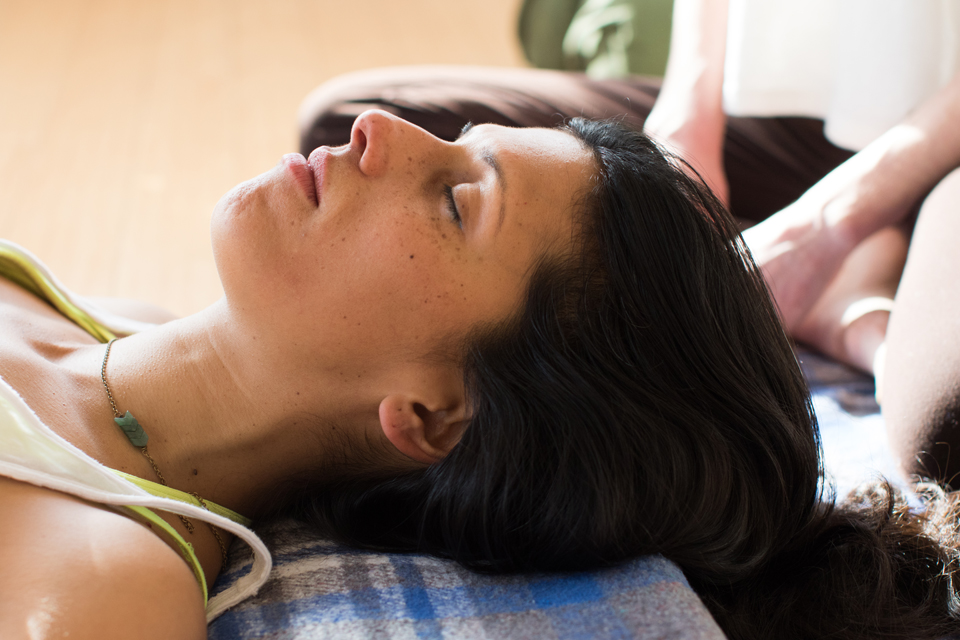
Photo: Marina Dempster
A better future
With the film’s April 2017 release, Attiya found herself well on the road to physical recovery. Maybe even more importantly, her spirit had also begun to mend.
“Since making the film and talking with Steve about our past, I have begun to heal,” she says. “I don’t have nightmares anymore. The panic attacks I used to get regularly are happening way less. I’m not always looking over my shoulder, afraid that Steve will be there. I’m not constantly safety planning wherever I go. When I see Steve now, my first thought isn’t how he harmed me. I’m able to breathe better, sleep better and relax more.”
Attiya acknowledges that her approach to healing isn’t the right choice for everyone. But it is for some and it was for her.
“I hope the film demonstrates what can happen when the person who harmed someone takes responsibility to repair those harms,” she says. “The fact that Steve participated on camera, has been accountable to me for his use of violence and stands by the film is justice for me.
“I hope Steve will continue to work on building relationships free of violence. I want Steve to have people in his life who care for him and are proud of him for being involved in the film.”
At the end of each screening, Attiya and her team are met with long lines of people who want to talk with them and share their stories—be heard. “It’s an emotional and powerful scene,” she says. “It demonstrates to me how common violence is in people’s lives and how so many of us carry that pain as we walk through the world.”
Perhaps more than anything else, Attiya wants us all to know that people who commit violence need help, too, and that help is available.
With that sentiment, she sets an incredible example, of courage but also of great compassion. Her film shows much more than just a better man. It lights the way to a better, more receptive world that brings everyone into the conversation—a world in which we can listen, understand and finally begin the healing process.
* * *
For the latest updates on A Better Man and to learn where and when you can see the film, visit abettermanfilm.com. You can also follow @ABetterManFilm on Twitter.
If you’re looking for support relating to domestic violence, please see the site’s list of resources.
Thank you to Janette Luu for helping make this article possible, and to Ottawa’s Tom Sharp for nominating Attiya as a Kickass Canadian.
 Kickass Canadians
Kickass Canadians
Attiya, did you live on Ancaster Ave in Ottawa when you were 12-13?
Either way, thank you for surviving and your strength.
With love,
Lara